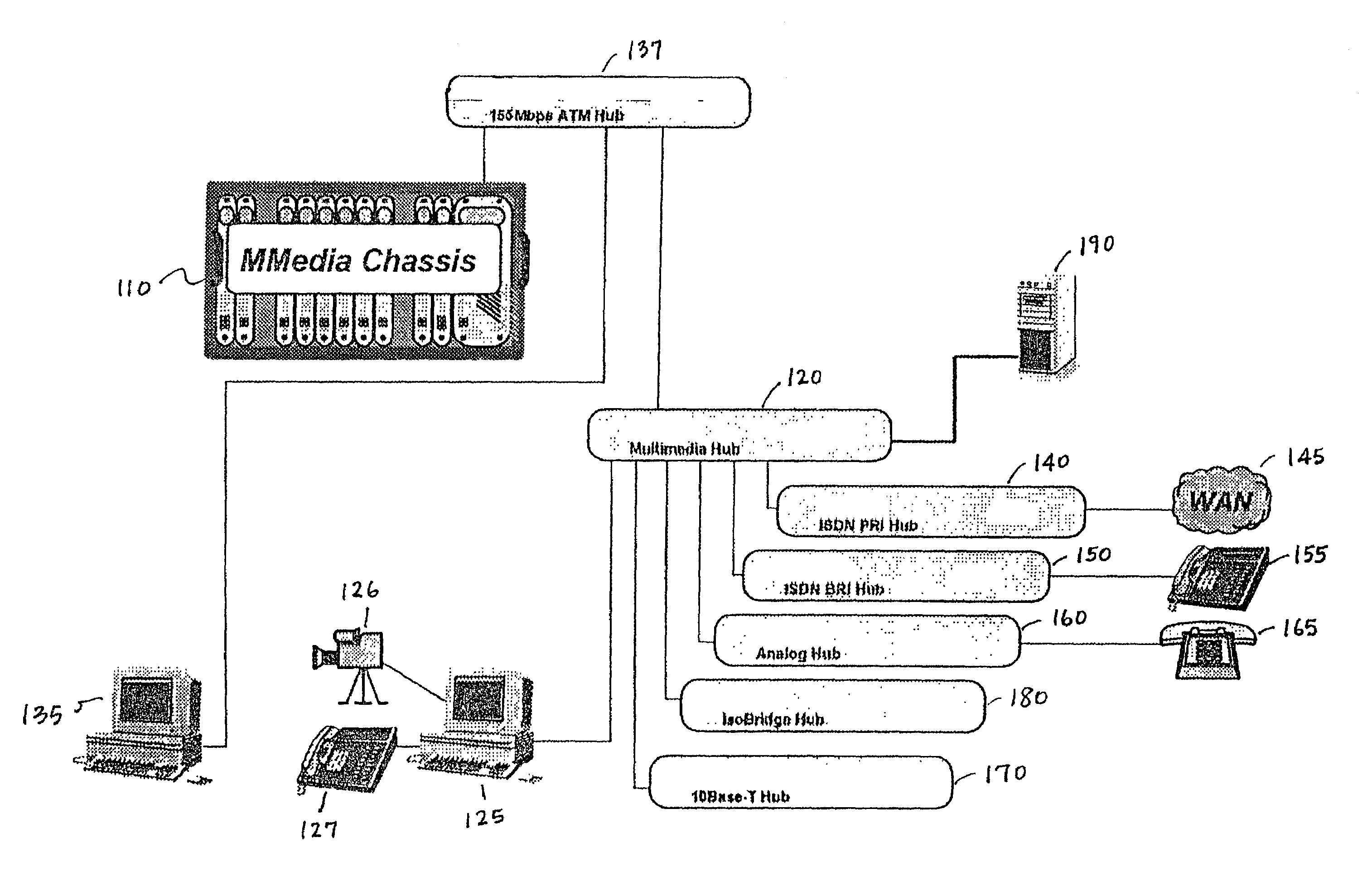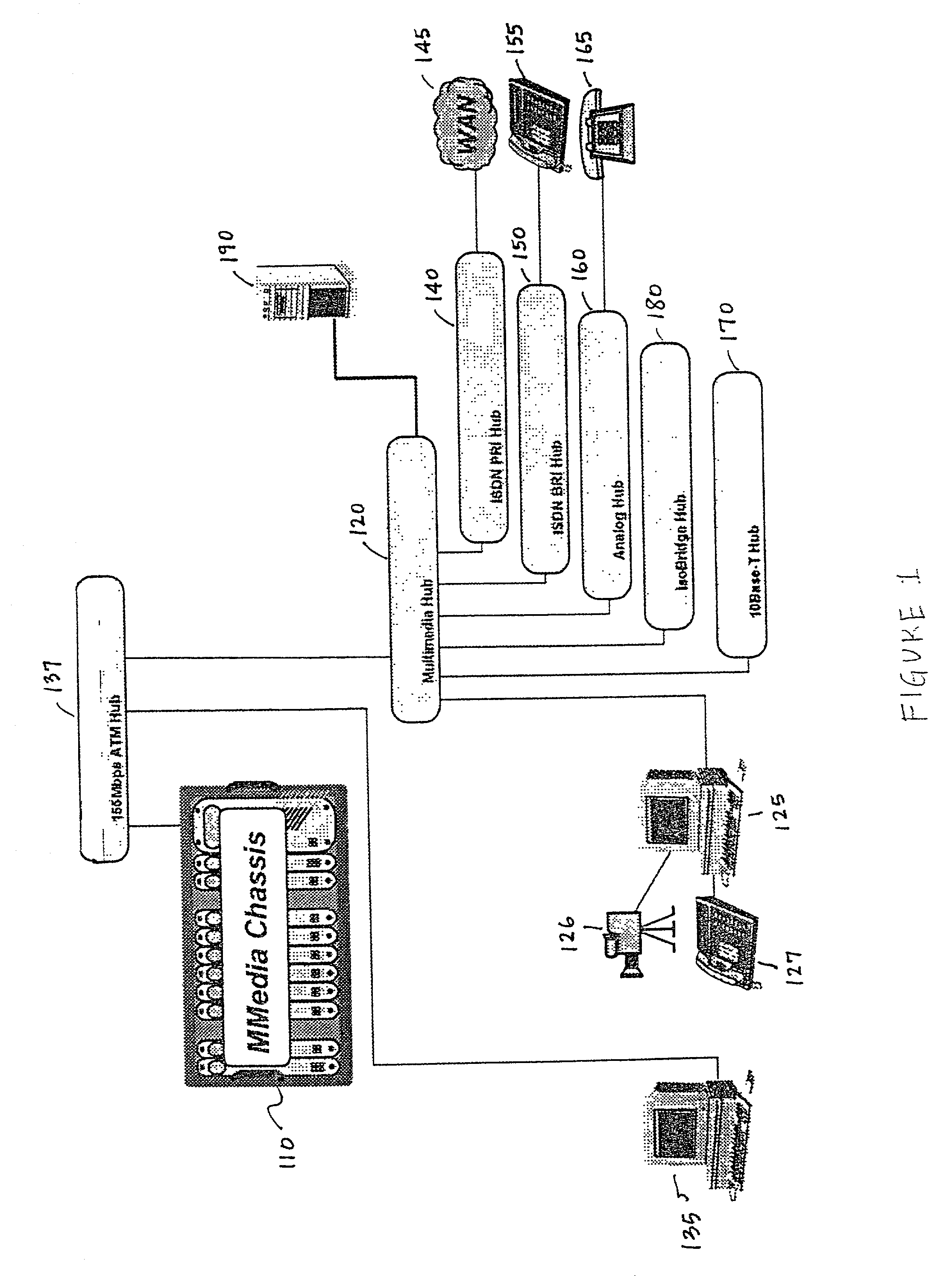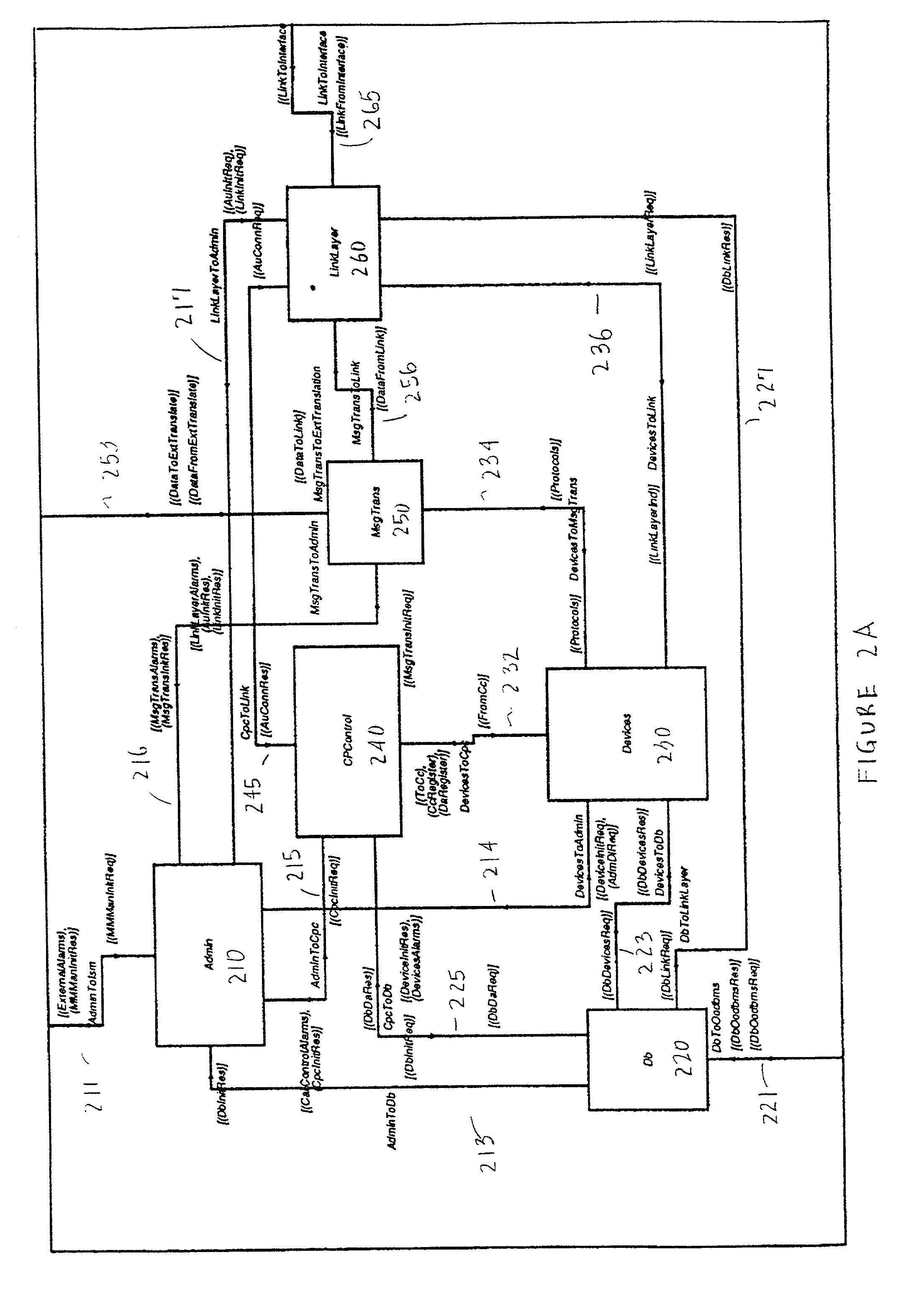Distributed interactive multimedia system architecture
a multimedia system and multimedia technology, applied in the field of communication systems, can solve the problems of prohibitively expensive and unnecessary, limited multimedia for the most part, and most lans are susceptible to power loss
- Summary
- Abstract
- Description
- Claims
- Application Information
AI Technical Summary
Benefits of technology
Problems solved by technology
Method used
Image
Examples
Embodiment Construction
[0139]Referring initially to FIG. 1, illustrated is a system diagram of an interactive multimedia system according to the present invention.
[0140]The system, generally designated 100, may comprise a multimedia chassis 110 adapted to receive a plurality of cards therein. The system 100 may alternatively or additionally comprise a plurality of hubs in separate chassis. In the latter case, each of the hubs would contain one of the cards otherwise located in the multimedia chassis 110. Because the hubs are separate from each other, the following discussion will be directed to hubs, as opposed to cards, in the multimedia chassis 110, although it should be understood that the hubs can as easily exist as cards within the multimedia chassis 110.
[0141]A multimedia hub 120 forms a principal component of the system 100. In the illustrated embodiment, the multimedia hub 120 contains the following functions: 10Base-T hub repeater, B channel switch, isoEthernet® interfaces (allowing a subordinate...
PUM
 Login to View More
Login to View More Abstract
Description
Claims
Application Information
 Login to View More
Login to View More - R&D
- Intellectual Property
- Life Sciences
- Materials
- Tech Scout
- Unparalleled Data Quality
- Higher Quality Content
- 60% Fewer Hallucinations
Browse by: Latest US Patents, China's latest patents, Technical Efficacy Thesaurus, Application Domain, Technology Topic, Popular Technical Reports.
© 2025 PatSnap. All rights reserved.Legal|Privacy policy|Modern Slavery Act Transparency Statement|Sitemap|About US| Contact US: help@patsnap.com



